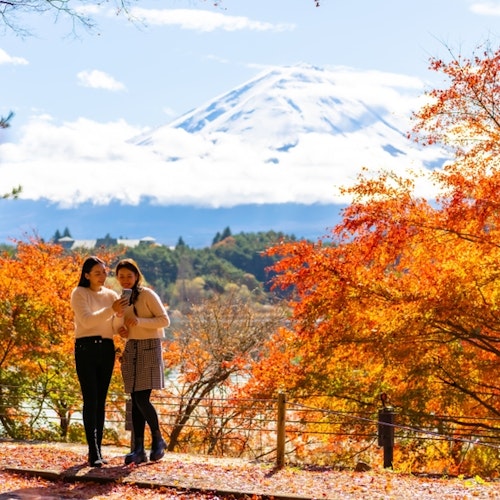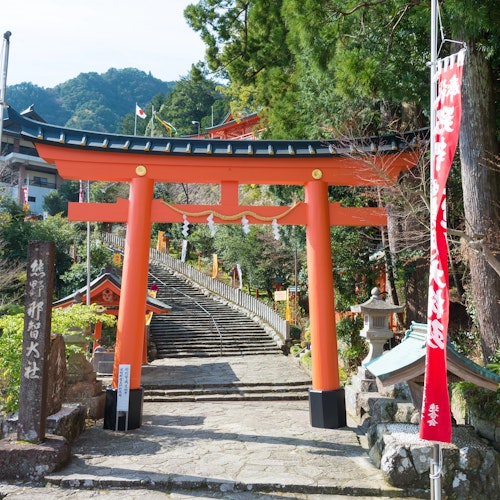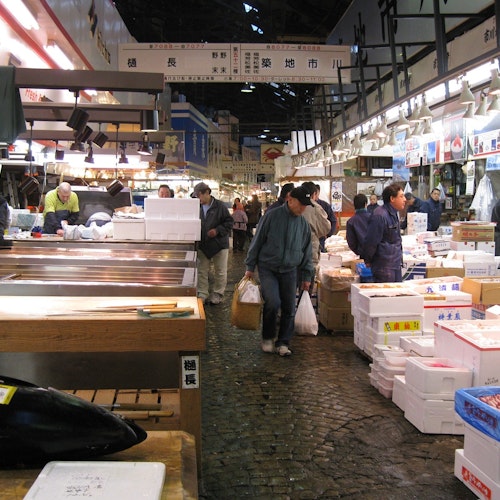
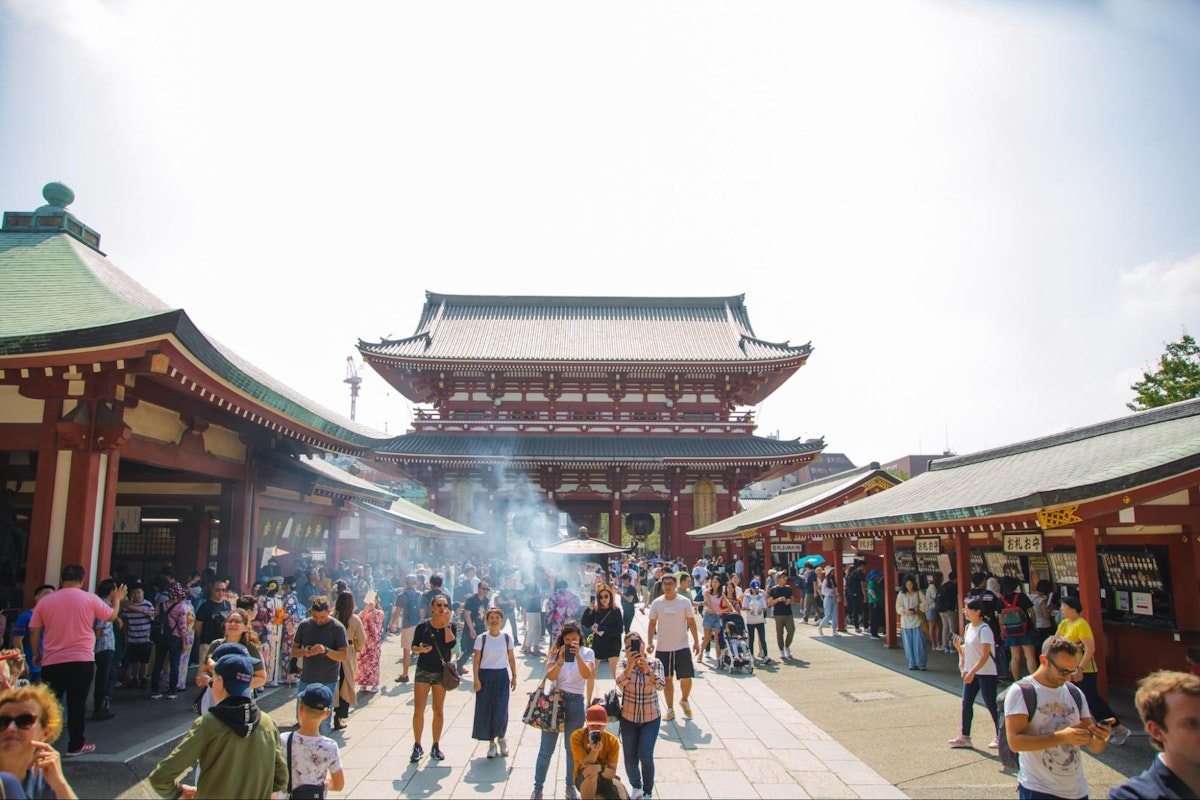
As the sun peeks over the horizon, bathing the land in a soft, golden hue, another day dawns in Japan, the 'Land of the Rising Sun.' Here, tradition entwines with modernity, creating an intricate tapestry of cultures that is both charmingly old-fashioned and starkly futuristic. While the bustling metropolis of Tokyo and the historic beauty of Kyoto often claim the spotlight, the true spirit of Japan lies tucked away in its lesser-known locales, waiting to be discovered.
From the northernmost region of Hokkaido, with its stunning landscapes and fresh seafood, to the southernmost islands of Okinawa, a paradise of white sandy beaches and turquoise waters, Japan’s diversity stretches far and wide. Beyond the cherry-blossom-lined avenues of Kyoto and the neon-lit skyscrapers of Tokyo, a world brimming with undisturbed beauty, culinary delights, and cultural immersion exists.
This is an invitation to step off the beaten track and venture into the heart of Japan’s hidden gems. Ready your suitcase, charge your camera, and let your wanderlust guide you as we unearth the treasures that lie beneath the surface of this fascinating country. The journey begins now!
Hakodate, the jewel of Hokkaido's southern region, is a city where the romance of the past meets the vibrancy of the present. An intricate blend of east meets west, Hakodate boasts a cultural tapestry that's as diverse as its breathtaking natural beauty.
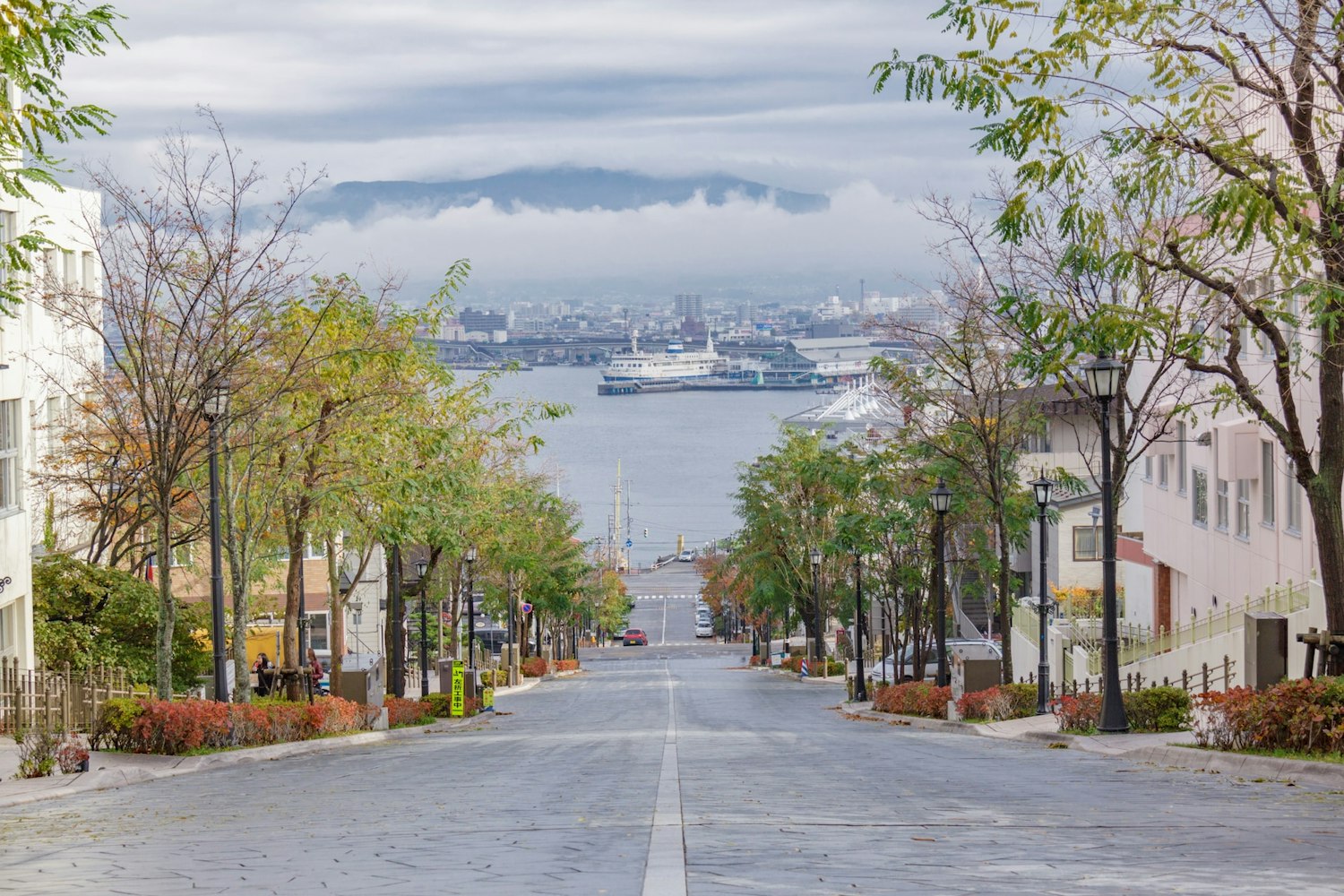
As the sun dips below the horizon, painting the sky with shades of orange and purple, one of Hakodate's most mesmerizing sights prepares to reveal itself. Mount Hakodate, a 334-meter-high mountain located at the southern end of the city, offers what is often lauded as one of the world's most spectacular night views. The journey to the top via the ropeway is an experience in itself. As you ascend, the city's panorama slowly unfolds, revealing a vista that leaves even the most seasoned travelers awestruck.
From the peak, the view is nothing short of magical. As day turns to night, the city below comes alive with myriad lights, stretching towards the horizon in a spectacular display. The cityscape, flanked by the sea on both sides, is a sight to behold, the twinkling lights resembling a galaxy of stars on the ground.
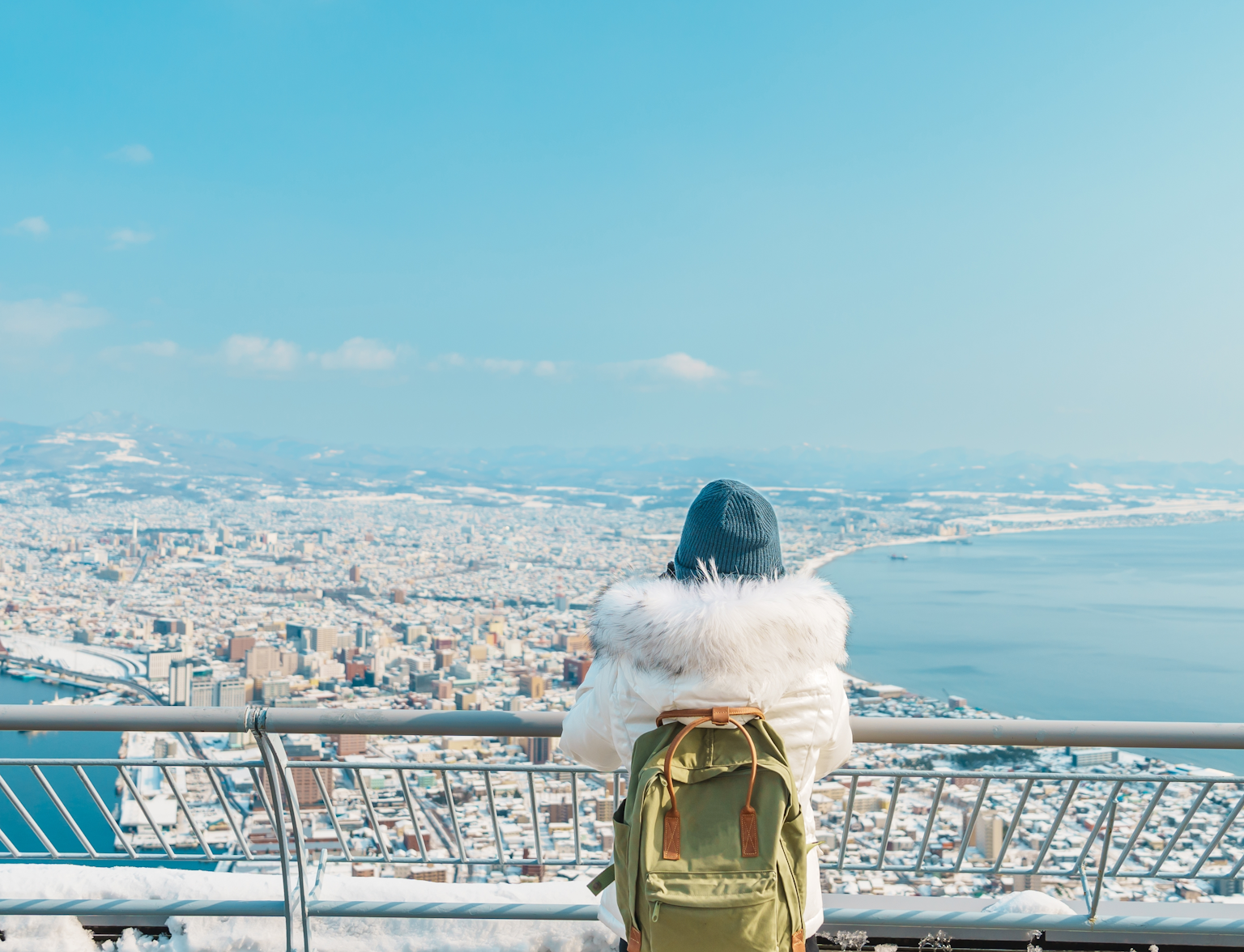
See the city's vista from the peak.
With the break of dawn, Hakodate stirs to life, its rhythm dictated by the city's vibrant morning markets. The Hakodate Morning Market, or 'Asaichi,' is a buzzing microcosm of the city's culture. Over 250 stalls come alive each morning, their wares ranging from a colorful array of fruits and vegetables to a vast variety of seafood.
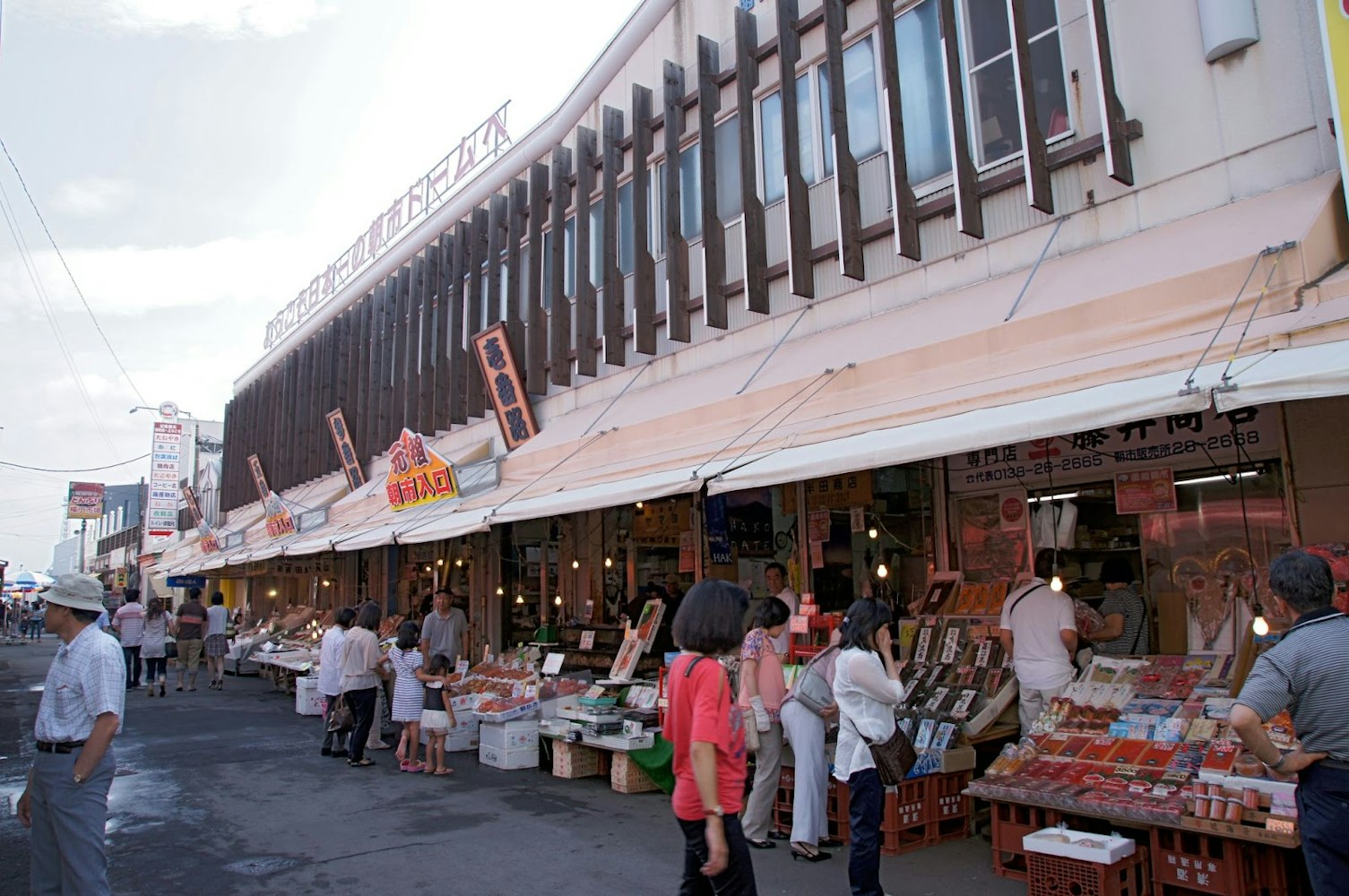
Image Credit: Wikimedia
Your culinary adventure begins here, amidst the lively chatter of vendors and the tantalizing aroma of fresh produce. Seafood lovers are in for a treat - feast on sumptuous seafood donburi, a rice bowl topped with the day's freshest catch. Whether it's the rich creaminess of uni (sea urchin) or the salty pop of ikura (salmon roe), your taste buds are in for a gastronomic delight that defines the essence of Hakodate.
History buffs will find their haven at the Goryokaku Fort. The star-shaped citadel is not just an architectural marvel, but also a significant symbol of Japan's journey through history. Built in the late Edo Period, the fort has seen battles that changed the course of Japanese history.
Today, the fort is transformed into a public park that comes alive in a riot of colors during the cherry blossom season. Walking around the fort, with petals gently floating down, you can almost hear the echoes of the past, making history come alive in the most enchanting way.
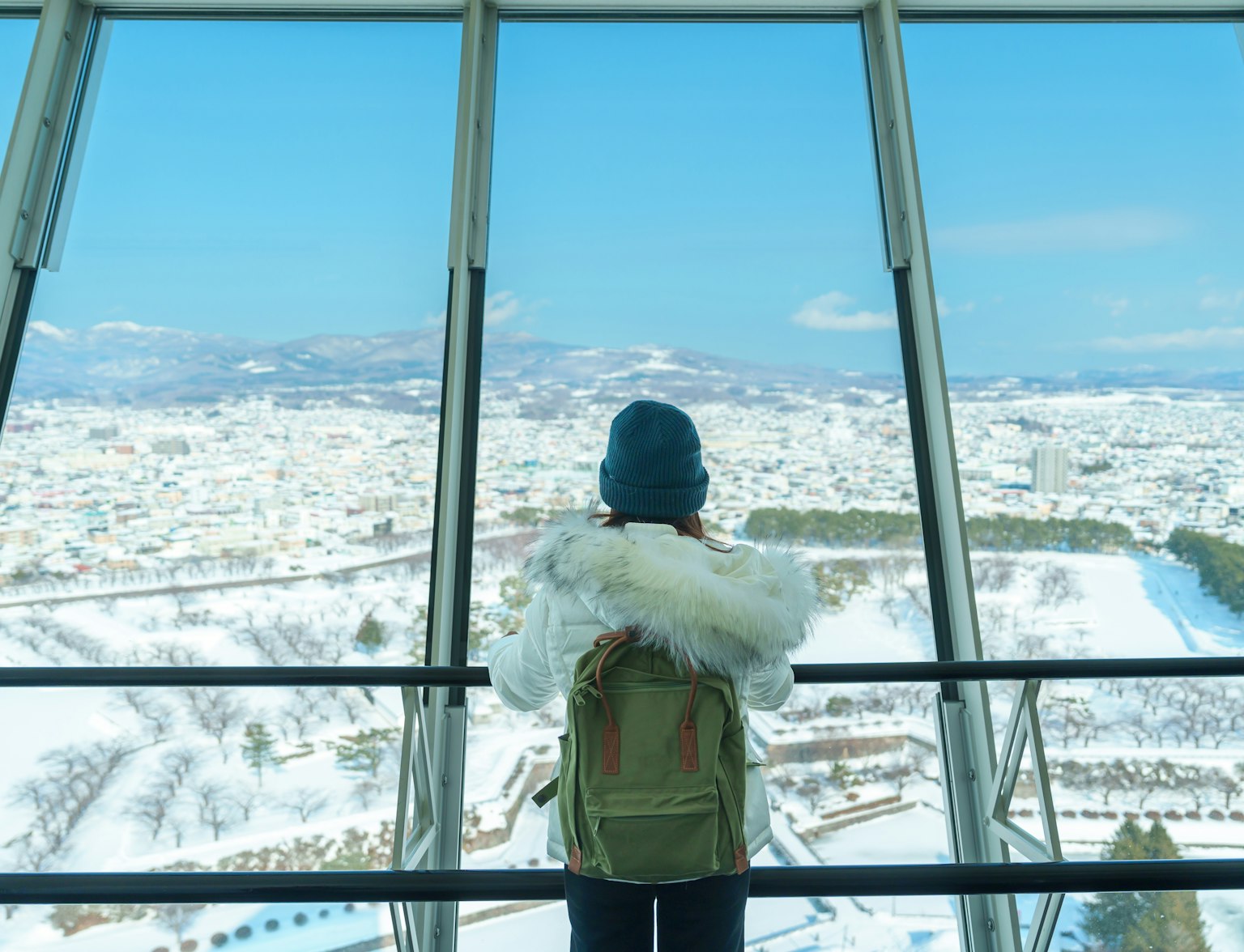
Walk around the fort with this tour.
Motomachi, a district in Hakodate, tells a tale of times when the city was one of the first in Japan to open its doors to foreign influences. A leisurely walk down the streets of Motomachi is like flipping through a beautifully illustrated history book. From the Russian Orthodox Church's onion-shaped domes to the elegant lines of the Old British Consulate, the area offers an intriguing blend of architectural styles.

Every corner here whispers stories of a bygone era, a testament to Hakodate's unique history as a port city. Each experience in Hakodate, be it the breathtaking night view from Mount Hakodate, the culinary extravaganza at the morning market, the historic charm of Goryokaku Fort, or the cultural fusion in Motomachi, is a thread in the city's vibrant tapestry, waiting to be explored.
Often referred to as 'Little Kyoto,' Kanazawa is a city that still echoes the footsteps of samurai, the whispers of geishas, and the tranquility of some of the most beautiful gardens in Japan. A city where tradition reigns supreme, Kanazawa invites you to step back in time and discover its rich cultural tapestry.
Arguably the heart of Kanazawa's natural beauty is Kenrokuen, one of the Three Great Gardens of Japan. This sprawling landscape garden is a masterpiece that perfectly encapsulates the 'six sublimities' of spaciousness, seclusion, artifice, antiquity, water courses, and panoramas - qualities considered crucial for an ideal garden.
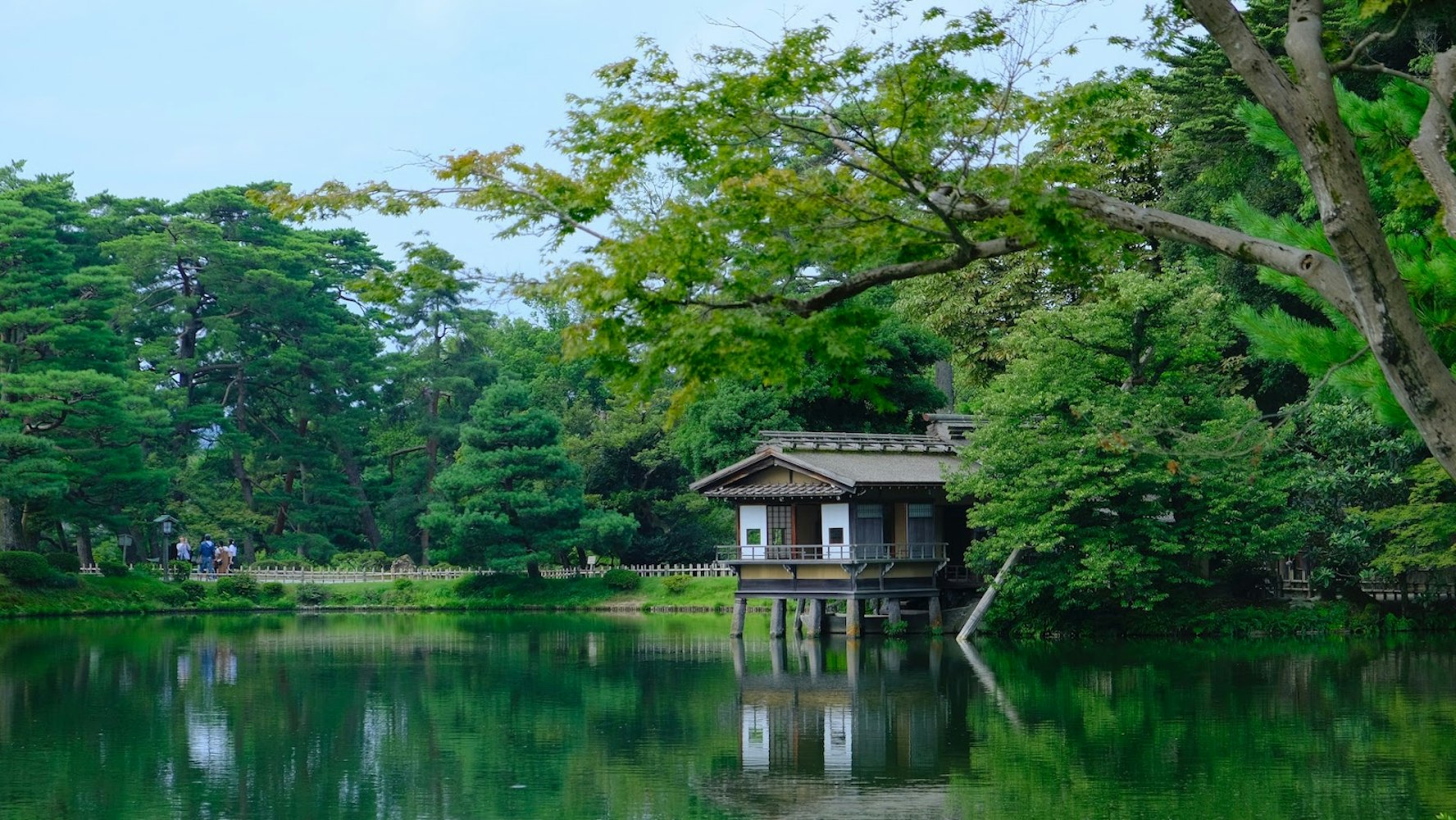
From the plum blossom trees that announce the arrival of spring to the snow-draped landscapes of winter, Kenrokuen transforms with every season, each offering a distinct spectacle. As you meander through its tranquil pathways, witness the grace of Kotojitoro Lantern standing by the mirror-like surface of Kasumiga-ike Pond, or find solace under the Karasaki Pine, its branches spreading like poetic calligraphy in the air.
From the serene embrace of Kenrokuen, step into Nagamachi, where the spirit of the samurai era still lingers. Here, narrow lanes flanked by earthen walls, a labyrinth of water canals, and atmospheric samurai houses transport you back to a bygone era.
Visit the Nomura-ke, a samurai residence that offers a tangible link to Japan's feudal past. This carefully restored residence provides a rare opportunity to glimpse the samurai lifestyle, from their devotion to martial arts to their refined appreciation of culture and aesthetics. Wander through the house, take in the stunning garden views, and imagine the sound of a samurai's footsteps on the nightingale floors.
As the day fades into twilight, Kanazawa's geisha district, Higashi Chaya, begins to hum with anticipation. Here, historic teahouses line the streets, their wooden façades exuding an aura of timeless elegance. This is the heart of Kanazawa's traditional entertainment, where geishas have captivated audiences with their refined performances for centuries.
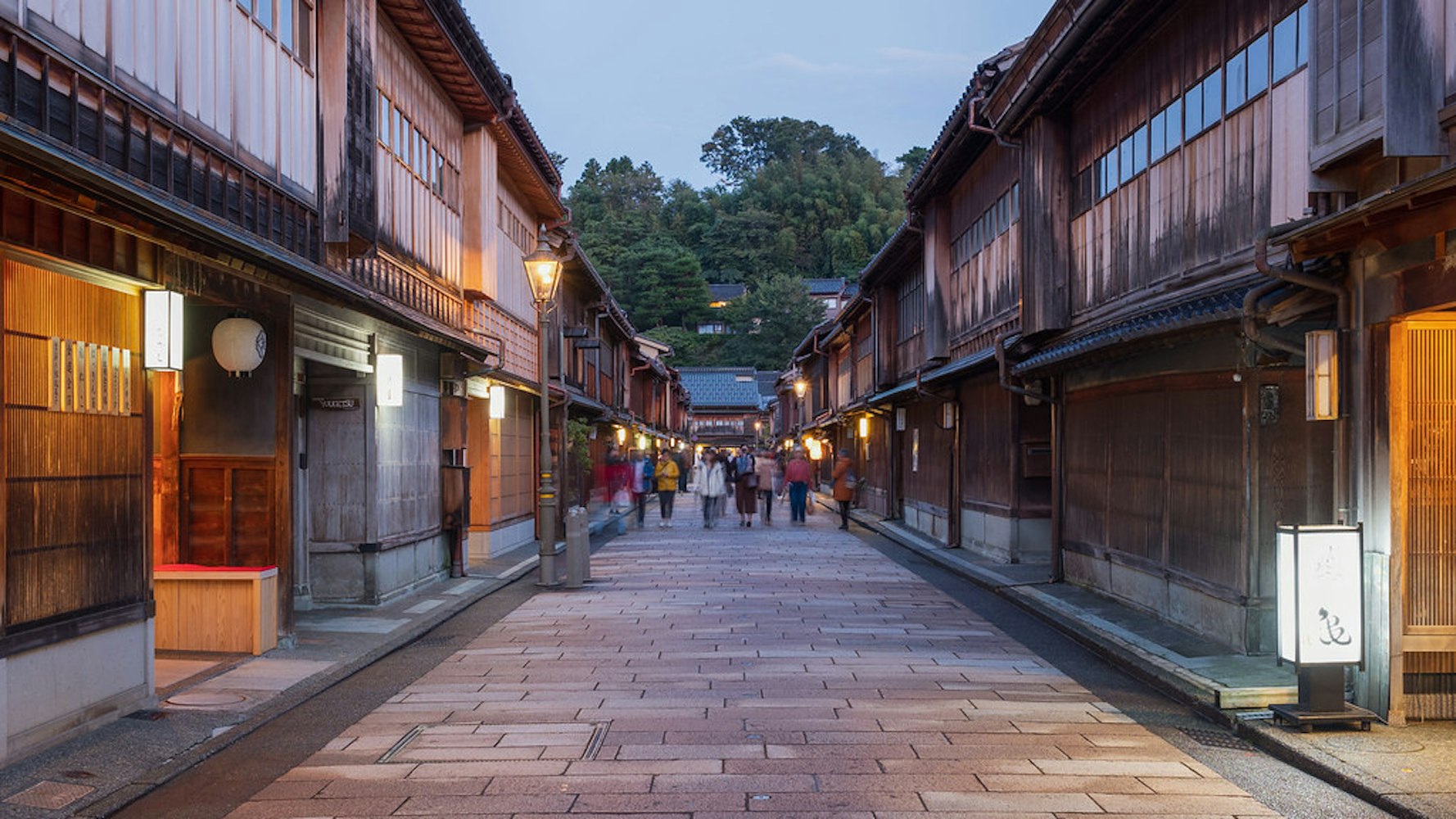
Image Credit: Benh LIEU SONG
At Shima Teahouse, now a museum, you can explore the world of the geishas. As you traverse its tatami rooms, imagine the clink of sake cups, the melodic tunes of the shamisen, and the graceful dance of the geishas. In the soft glow of lantern light, past and present blend, encapsulating the enduring charm of Kanazawa.
Matsue, often referred to as the 'City of Water,' is a city where waterways are as integral as the streets. Situated between Lake Shinji, Nakaumi lagoon, and the Japan Sea, Matsue is a tranquil city that boasts a rich cultural heritage, historical landmarks, and spiritual sanctuaries.
Dominating the cityscape is Matsue Castle, one of the only twelve original castles in Japan that have survived the ravages of time. Completed in 1611, the castle's striking black exterior has earned it the name 'Black Castle' or 'Plover Castle.' The towering keep, flanked by defensive walls and moats, stands as a remarkable testament to the architectural prowess of the Edo period.
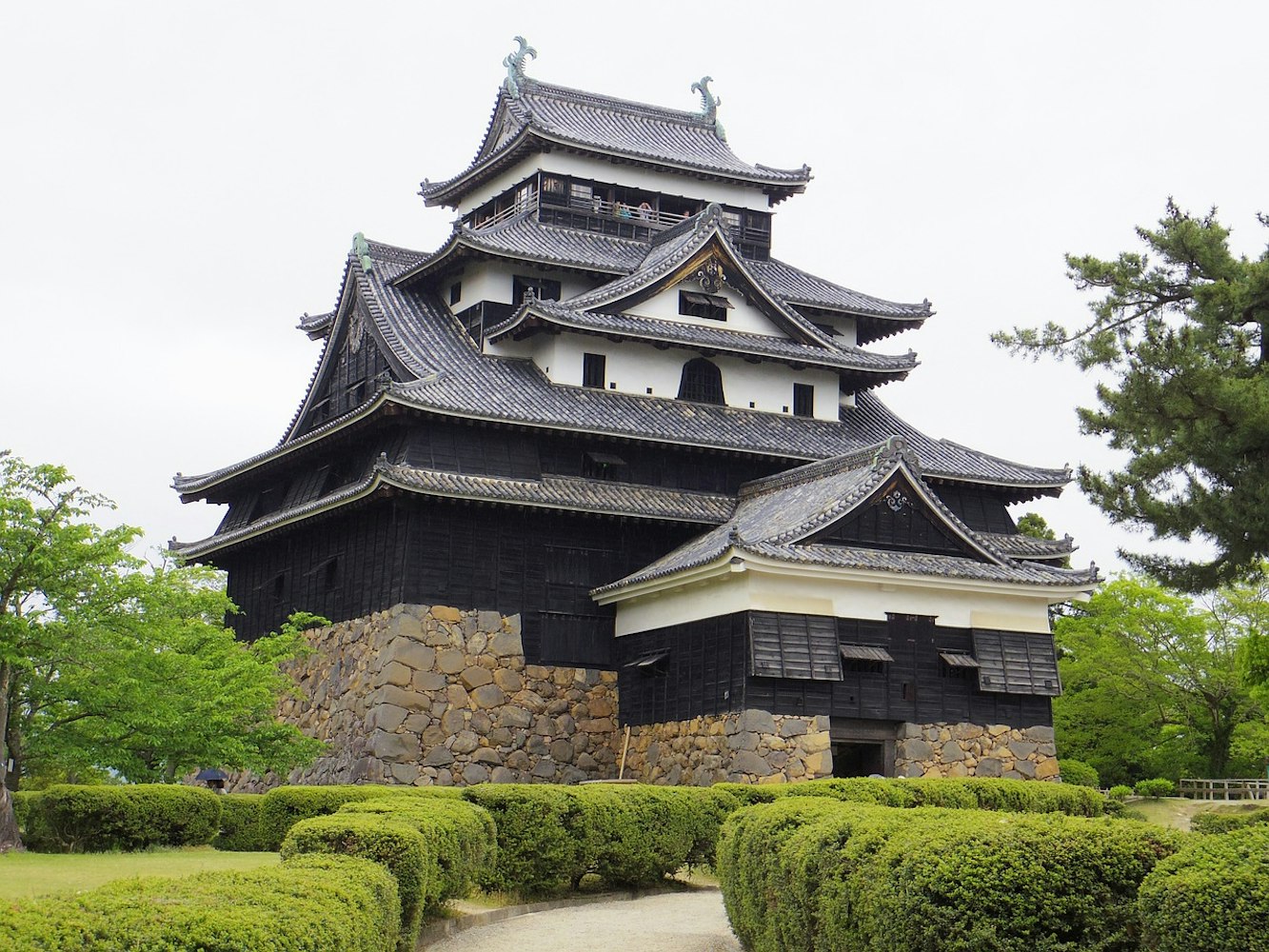
Inside the castle, each floor offers a glimpse into different aspects of samurai life, featuring armor, weapons, and historical documents. Climbing the steep, wooden staircases to the top floor reveals panoramic views of Matsue, a landscape of red-tiled rooftops surrounded by the calm waters of the city's many waterways.
Matsue's canals, once vital trade routes, now offer tranquil journeys through the city's picturesque landscapes. On a traditional Horikawa boat tour, you can glide under low bridges, past historic samurai houses, and around Matsue Castle.
As you float along, the guide's narratives fill the air, highlighting local legends and historical anecdotes, making the city's past come alive. This slow-paced cruise gives you a chance to appreciate the city from a unique perspective, framed by the calm waters and punctuated by the rhythmic sound of oars gently breaking the surface.
Amidst the city's hustle, you'll find Meimei-an, a traditional teahouse built in 1779 by Lord Fumai, a renowned tea master and the 7th feudal lord of Matsue. Tucked away in a picturesque garden, Meimei-an is a sanctuary of tranquility, embodying the principles of wabi-sabi, a philosophy that embraces the beauty in imperfection and transience.
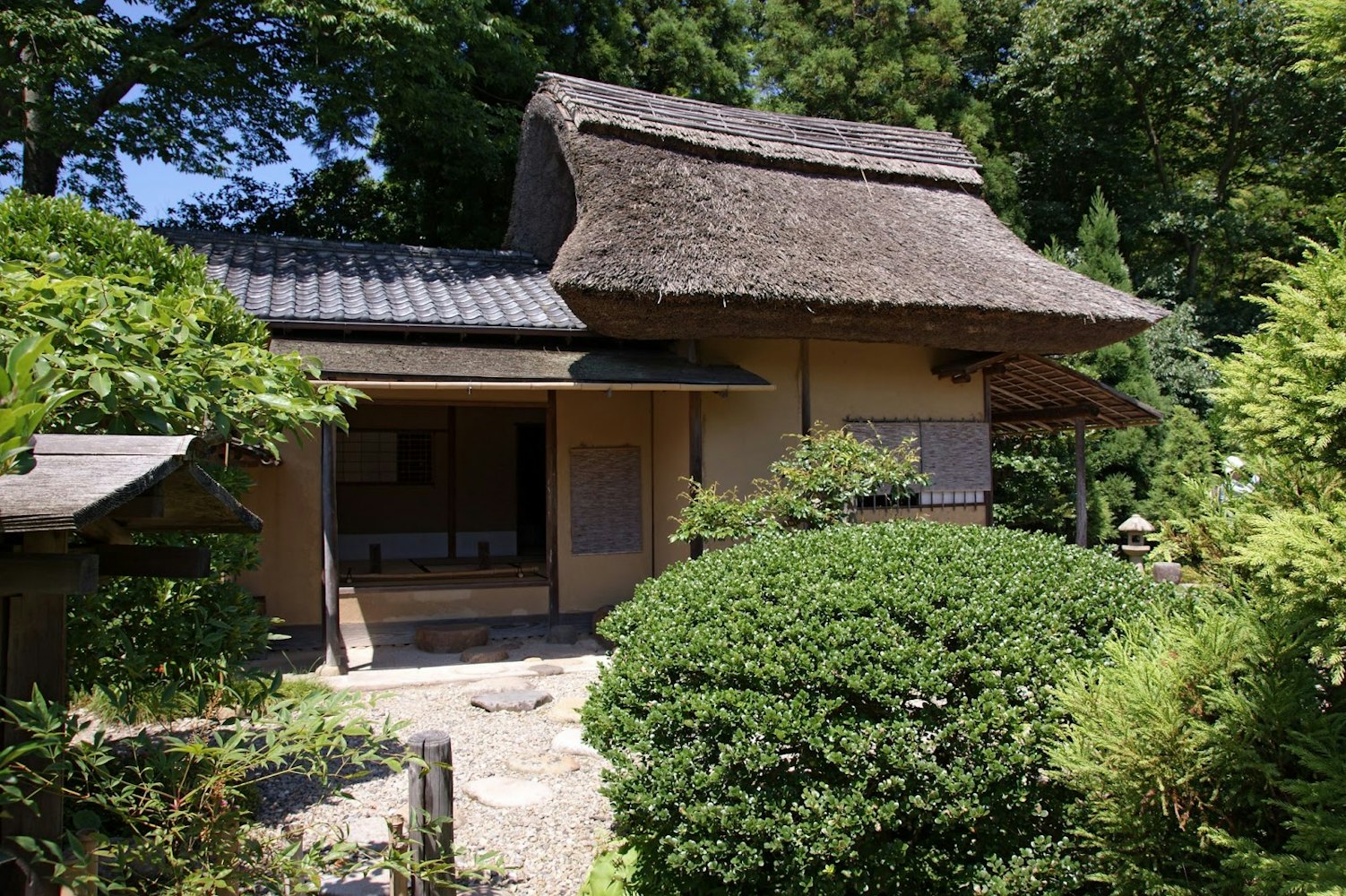
Image Credit: Wikimedia
Participating in a tea ceremony at Meimei-an offers a profound experience of Japanese culture. As you watch the meticulous preparation of matcha and partake in its consumption, you're not merely savoring tea, but also partaking in a ritual that has been preserved across centuries.
A short journey from Matsue will bring you to the spiritual heart of the region, Izumo Taisha, one of the oldest and most significant Shinto shrines in Japan. It is believed that every October, according to the lunar calendar, gods from across Japan gather here, making it a hub of spiritual energy.
The shrine's grand torii gate marks the entrance to a realm where divinity and nature intertwine. With the majestic shimenawa (sacred rope) hanging across the front of the main hall, the tallest in Japan, Izumo Taisha resonates with spiritual energy. Exploring the shrine grounds, surrounded by towering old trees, offers a sense of peace and introspection.
Nestled in the Seto Inland Sea, Naoshima is more than just an island. It's a world where nature and modern art harmoniously coexist, where every corner you turn takes you to an artistic discovery. With its innovative museums, eclectic sculptures, and architectural marvels, Naoshima stands as a beacon of creativity, beckoning art enthusiasts from around the globe.
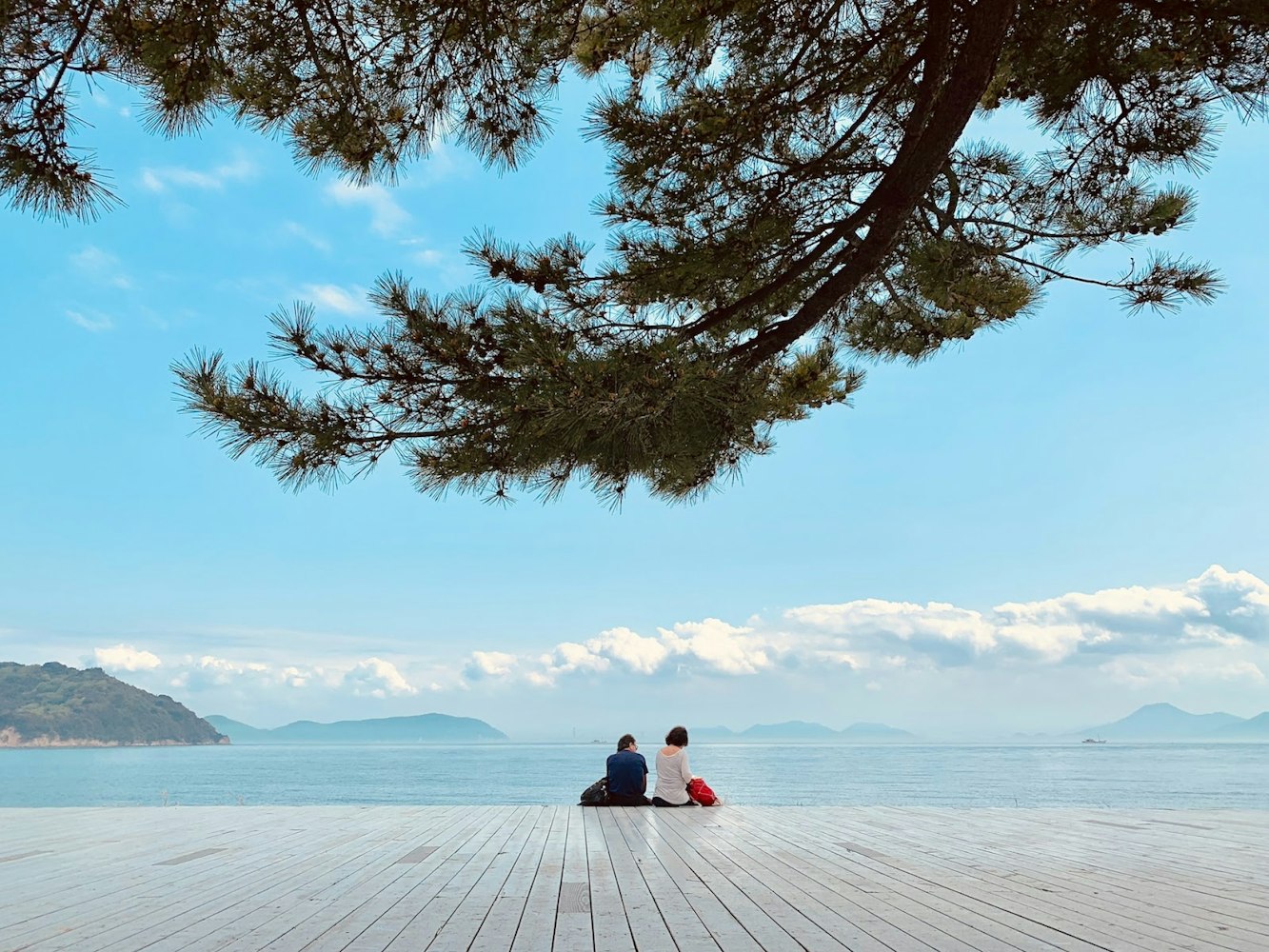
As soon as you step foot on Naoshima, you step into a living art exhibit. The island is home to a plethora of museums and installations, each showcasing a distinct expression of creativity. One such masterpiece is the Benesse House, a combination of a museum and a hotel, where you can immerse yourself in art day and night.
Nearby, the Chichu Art Museum, built mostly underground to preserve the island's natural beauty, features artworks that interact with nature's ever-changing display. Its architecture, artwork, and the surrounding landscape form a harmonious blend, engaging you in a profound aesthetic experience.
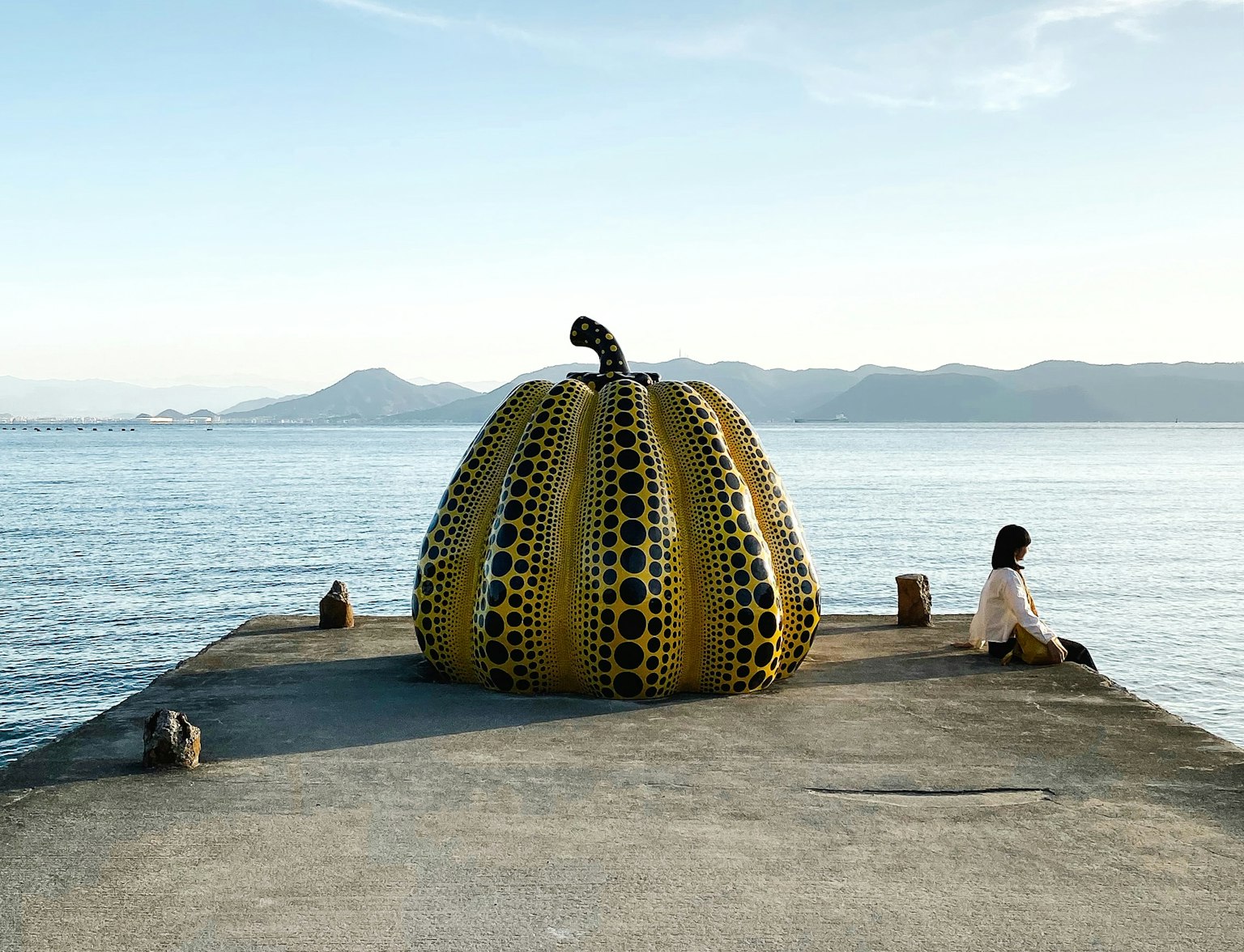
Explore the art galleries of Naoshima.
The creative genius of world-renowned artist Yayoi Kusama and architect Tadao Ando has left a transformative imprint on Naoshima. Kusama's iconic yellow pumpkin, playfully juxtaposed against the quietude of the Seto Inland Sea, has become a symbol of the island, an unmistakable emblem of Naoshima's artistic spirit.
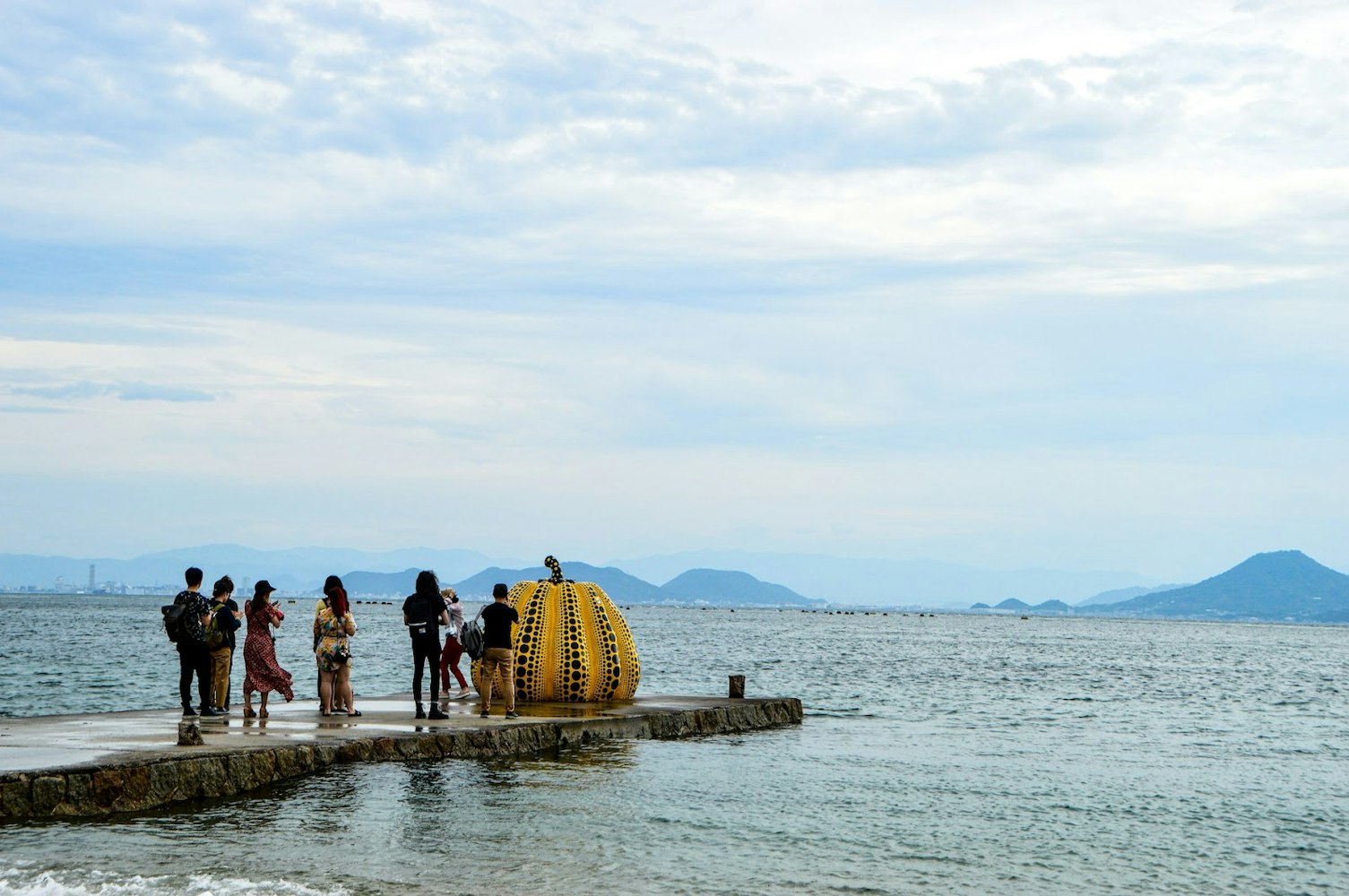
Ando's influence permeates the island's architecture. His style, which emphasizes the symbiosis between concrete structures and the interplay of light and shadow, resonates throughout Naoshima. His designs, including the Chichu Art Museum, Lee Ufan Museum, and the Ando Museum, subtly blend with the landscape, embodying a philosophy of harmony between nature and built environments.
Naoshima's ethos lies in its integration of art with its natural surroundings. Here, art isn't confined to galleries but freely breathes in the island's forests, beaches, and settlements. This unconventional fusion results in an open-air museum, a place where nature's tranquil beauty serves as a backdrop for human creativity.
The Art House Project takes this concept a step further by transforming abandoned houses and workshops into dynamic art installations. This fusion of traditional architecture, local community, and contemporary art reflects Naoshima's commitment to revitalizing the island through art. It's a remarkable symbiosis that positions art as a focal point of community life and engagement.
If you yearn to experience the serenity of the Edo era, look no further than Takayama. Tucked away in the mountainous region of Gifu Prefecture, this enchanting city effortlessly preserves the charm of a bygone era. From the time-honored architecture of its streets to its vibrant festivals and delectable cuisine, Takayama offers a vivid taste of traditional Japan.
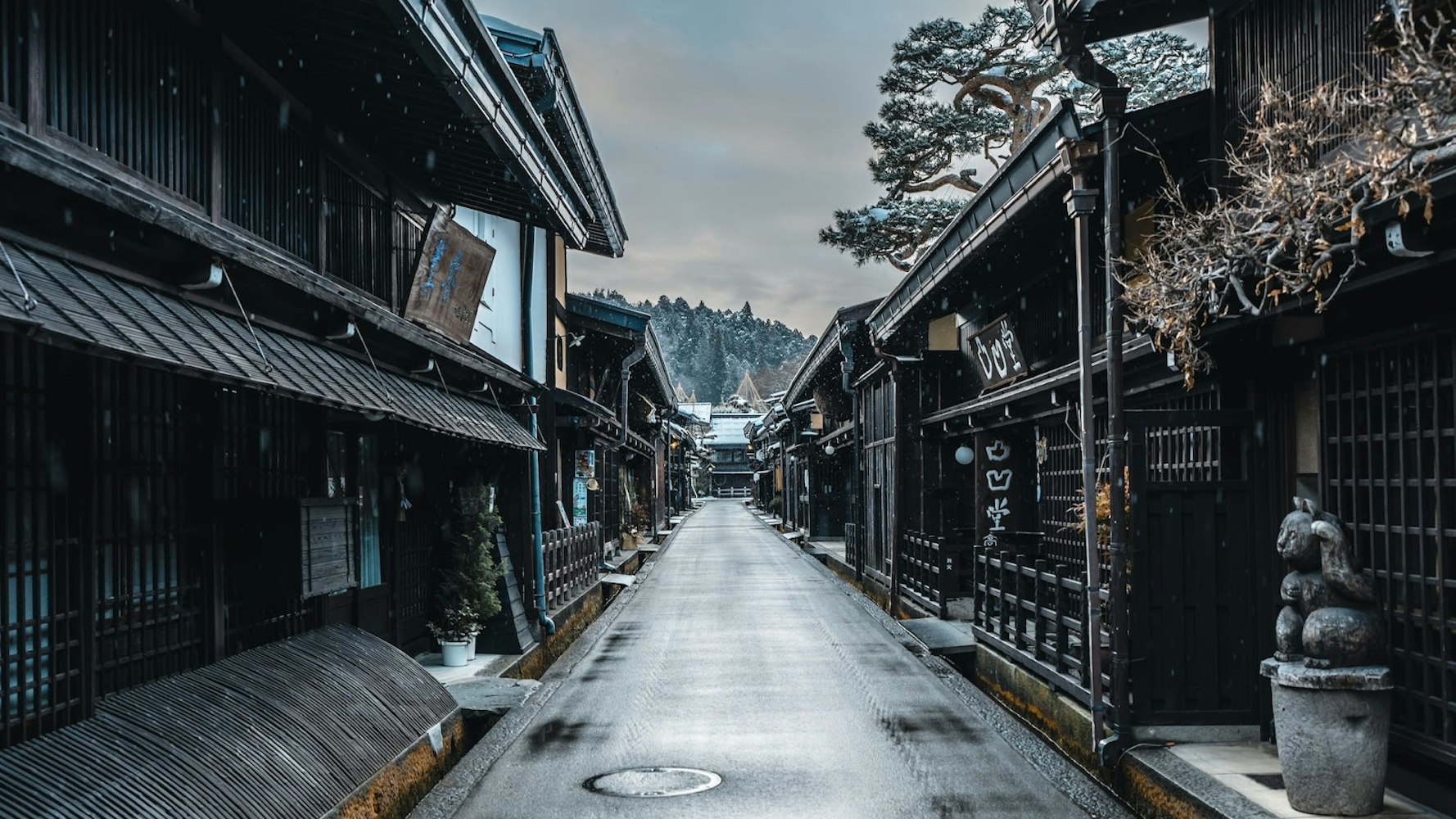
The Takayama Festival, renowned as one of Japan's three most beautiful festivals, is an exquisite cultural extravaganza. Held in the spring (Sanno Festival) and fall (Hachiman Festival), this grand event offers a vivid spectacle of Takayama's rich cultural heritage.
The festival's centerpiece is the ornate yatai (floats), each representing different neighborhoods of Takayama. Their elaborate artistry, intricate craftsmanship, and delicate carvings are a testament to the city's long-standing tradition of woodwork. The nighttime parade, known as Yomatsuri, is particularly enchanting, with the floats lit by hundreds of lanterns, casting a magical glow that dances on the old town's streets.
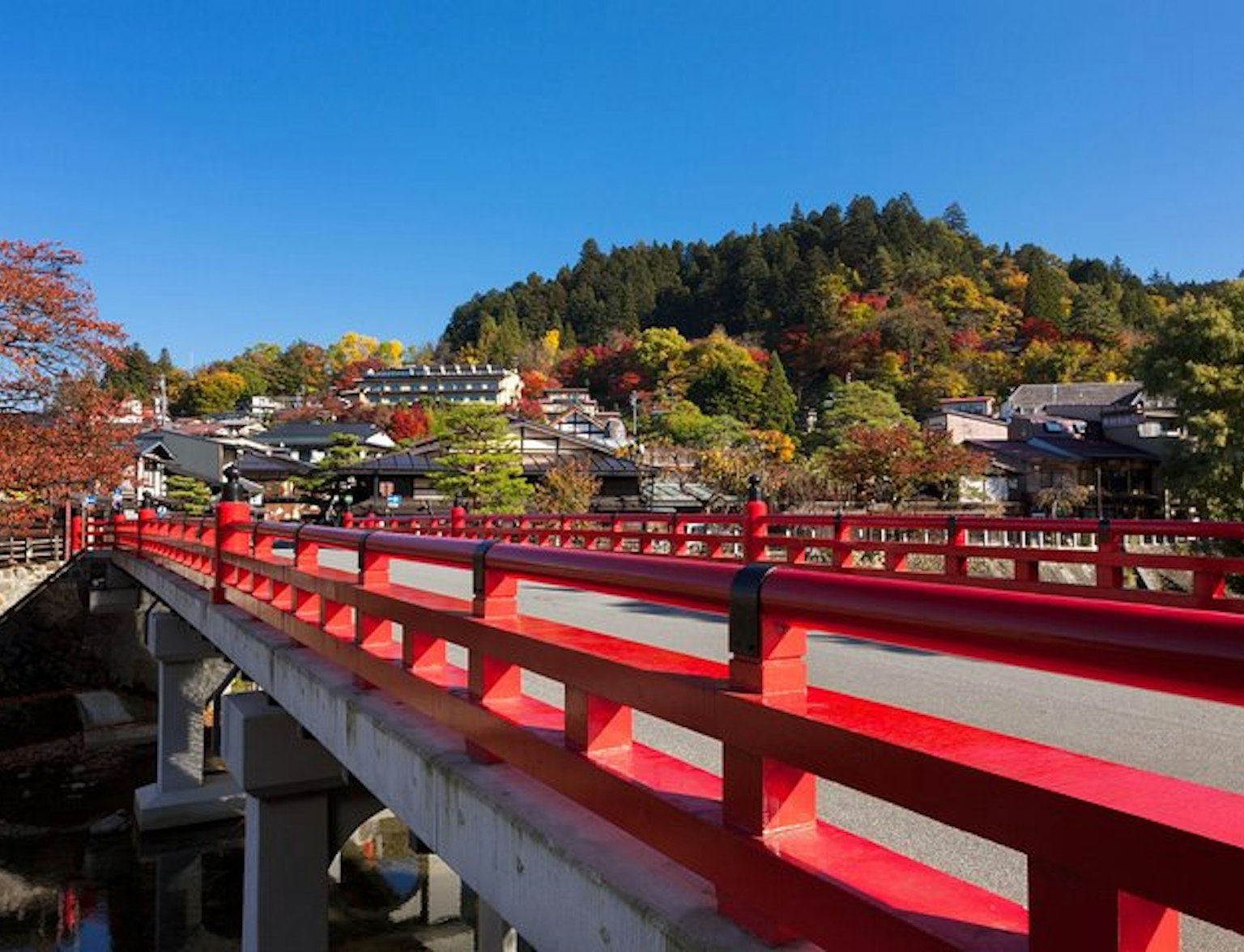
Recommended for Takayama tourists.
Foodies will find themselves in paradise in Takayama, thanks to the city's pride: Hida beef. This high-quality wagyu, renowned for its intense marbling, exudes a rich, savory aroma and offers a melt-in-your-mouth texture. It's not just the taste but also the preparation methods passed down generations, that make Hida beef a gastronomic experience to remember.
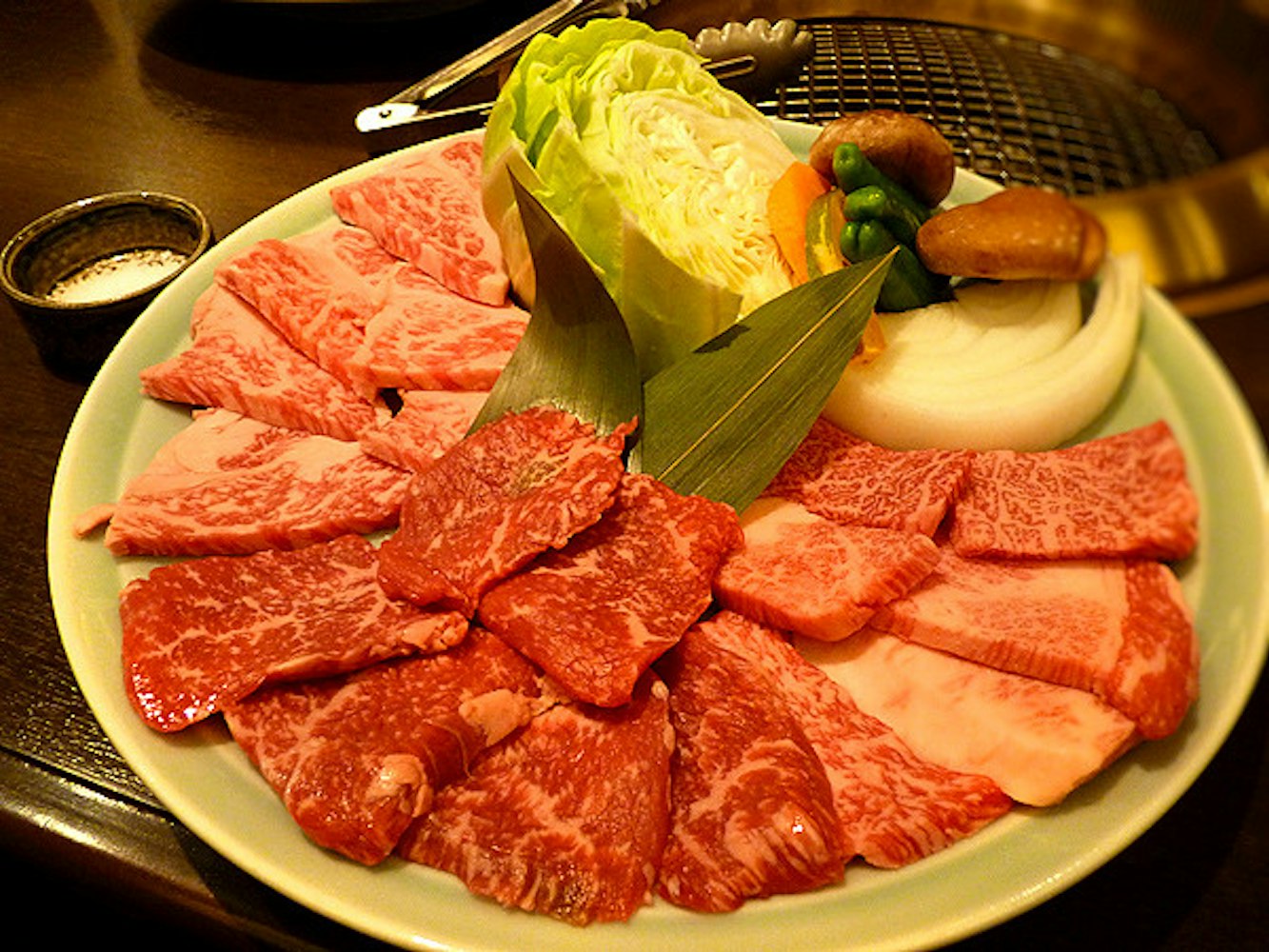
Image Credit: Catherine Mak
Whether it's grilled as a steak, slow-cooked in a succulent stew, or served raw as sushi, Hida beef is celebrated in countless culinary forms. Pairing it with locally brewed sake further enhances the sensory delight, creating a harmonious balance of flavors that reflects Takayama's culinary artistry.
A short journey from Takayama brings you to the serene village of Shirakawa-go, a UNESCO World Heritage site. This hamlet, with its unique gassho-zukuri farmhouses, is a living museum of rural Japanese life, as it has been preserved for hundreds of years.
These traditional farmhouses, with their steeply pitched thatched roofs designed to withstand heavy snowfall, paint a picturesque scene against the backdrop of surrounding mountains and rivers. Inside, visitors can explore the multi-level structure, used for silk farming in the past, and learn about the communal lifestyle that defined this region.
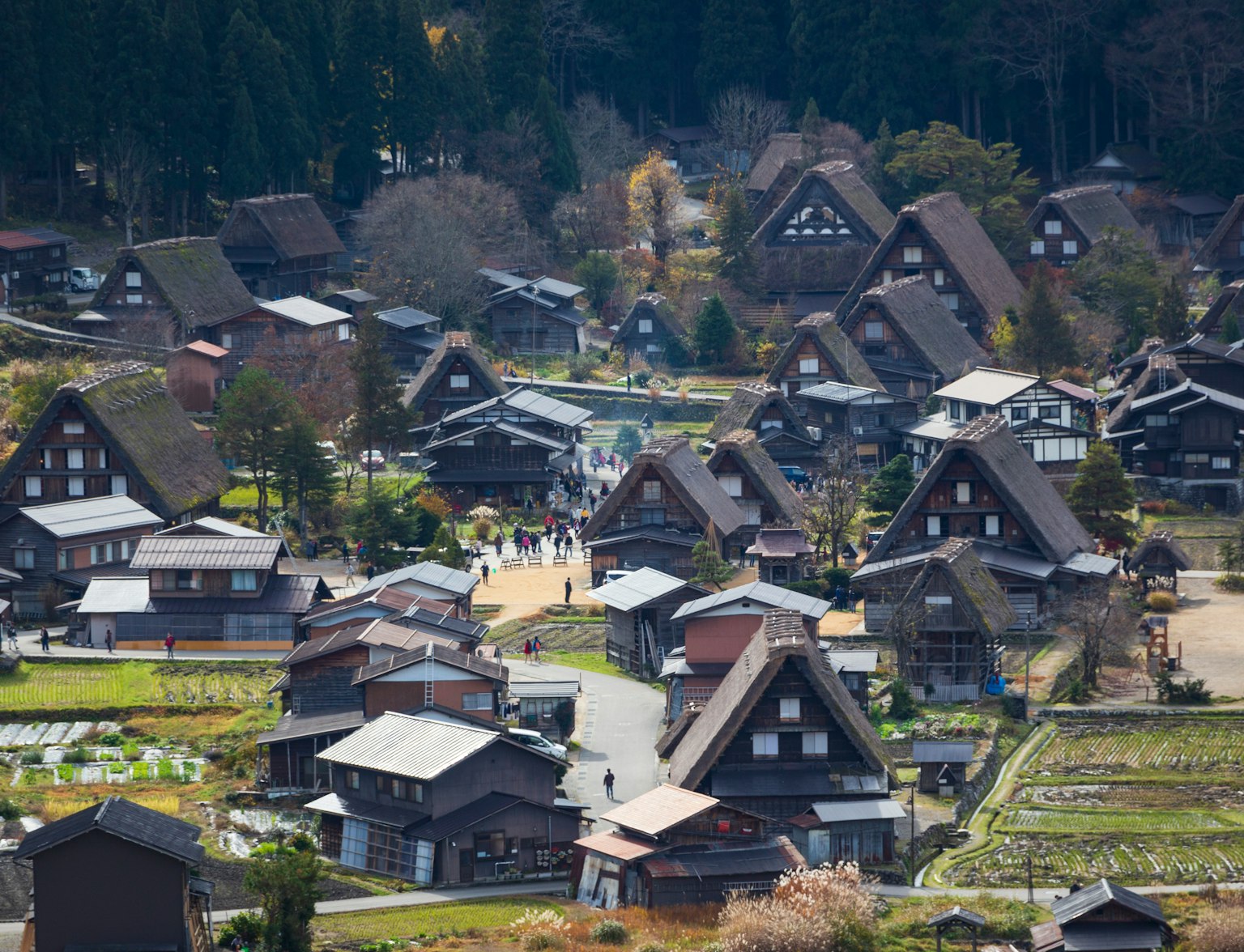
Visit the breathtaking Shirakawa-go, a UNESCO World Heritage Site.
Perched on the southern coast of Kyushu, Kagoshima bears an undeniable charm, reminiscent of Naples, Italy, with its balmy climate, vibrant cityscape, and the commanding presence of an active volcano. Unravel the beauty of this city that is a remarkable fusion of dynamic landscapes, rejuvenating wellness experiences, historical narratives, and a palate-pleasing culinary scene.
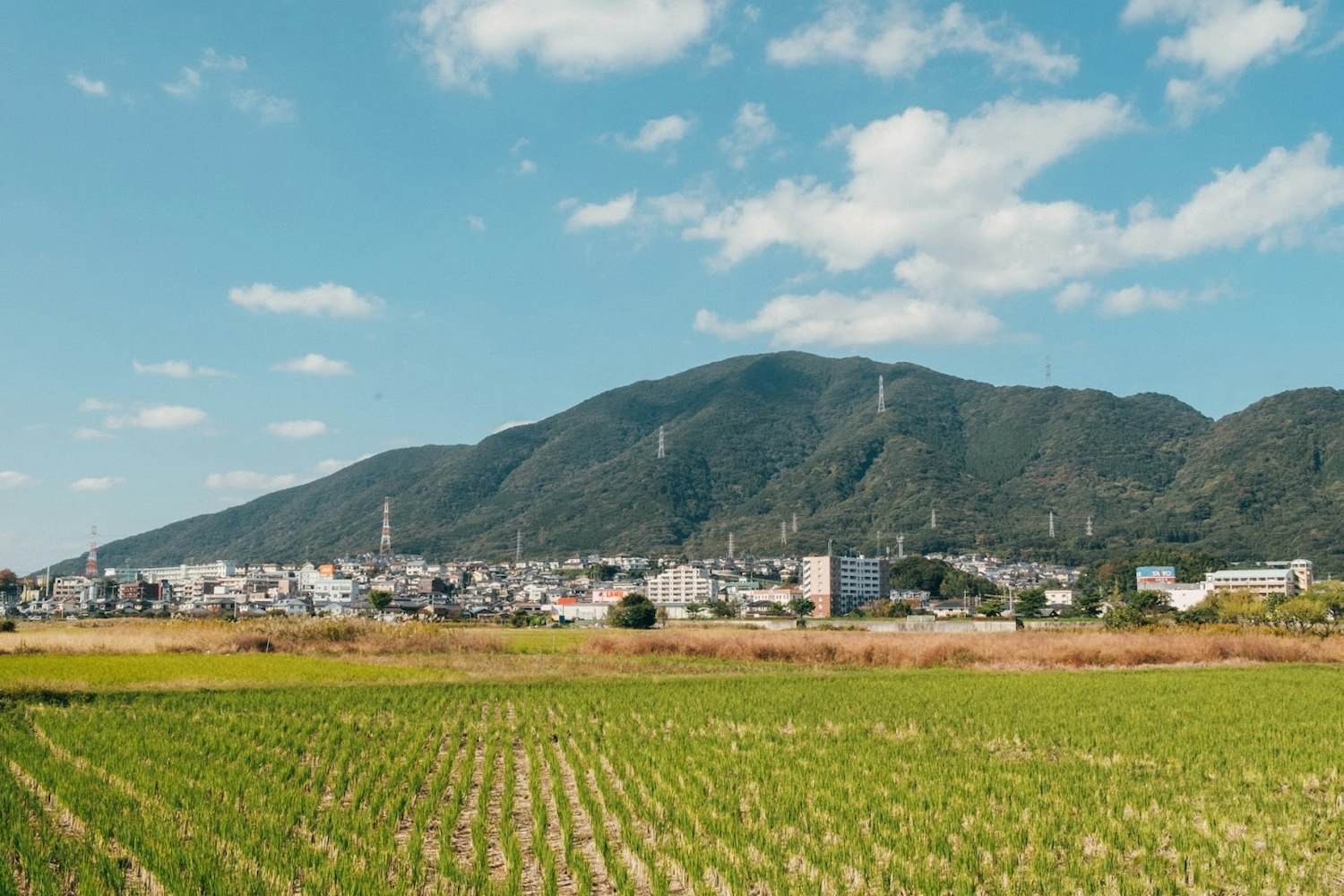
An iconic landmark, Sakurajima Volcano, is an unmissable sight in Kagoshima. As one of the most active volcanoes in the world, Sakurajima's regular minor eruptions and smoking craters provide a thrilling spectacle for visitors. This mighty volcano is not just a symbol of nature's raw power but a part of Kagoshima's everyday life, with volcanic ash a common sight on the city's streets.
From the city, you can enjoy stunning views of the volcano across Kinko Bay, especially beautiful during sunset. To experience Sakurajima up close, take a short ferry ride to the volcano itself and explore the trails leading to observation points for a closer look at this marvel of nature. Witnessing Sakurajima in action is a humbling experience, reminding us of the magnificence of Mother Earth.
For a unique spa experience, venture to the Ibusuki district in the south of Kagoshima, famous for its natural sand baths. This traditional therapy, known as sunamushi, involves being covered in warm, volcanic sand heated by natural hot springs beneath.
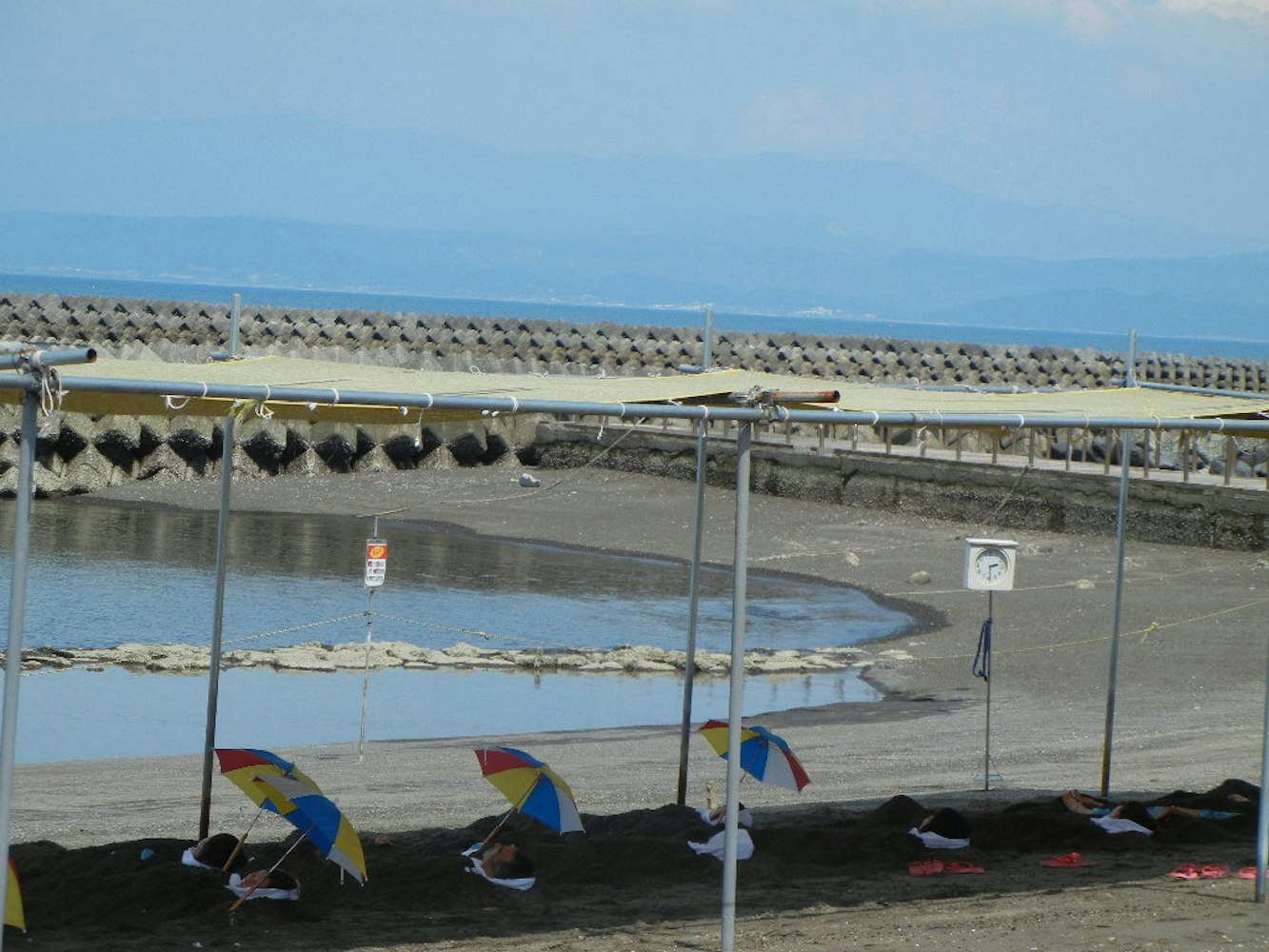
Image Credit: Wikimedia
The sand baths at Ibusuki are more than just a relaxing experience; they offer potential health benefits, such as enhancing blood circulation, detoxification, and muscle relaxation. Whether you are at a beach or a designated sand bath facility like Saraku Sand Bath Hall, lying buried in the warm sand while listening to the gentle sound of waves is a soothing and rejuvenating experience, deeply rooted in the wellness traditions of Kagoshima.
A visit to the historic Senganen Garden provides a tranquil retreat from the city's hustle and bustle. This traditional Japanese garden, designed by the influential Shimadzu clan, skillfully incorporates the surrounding landscape, including the backdrop of Sakurajima, into its layout.
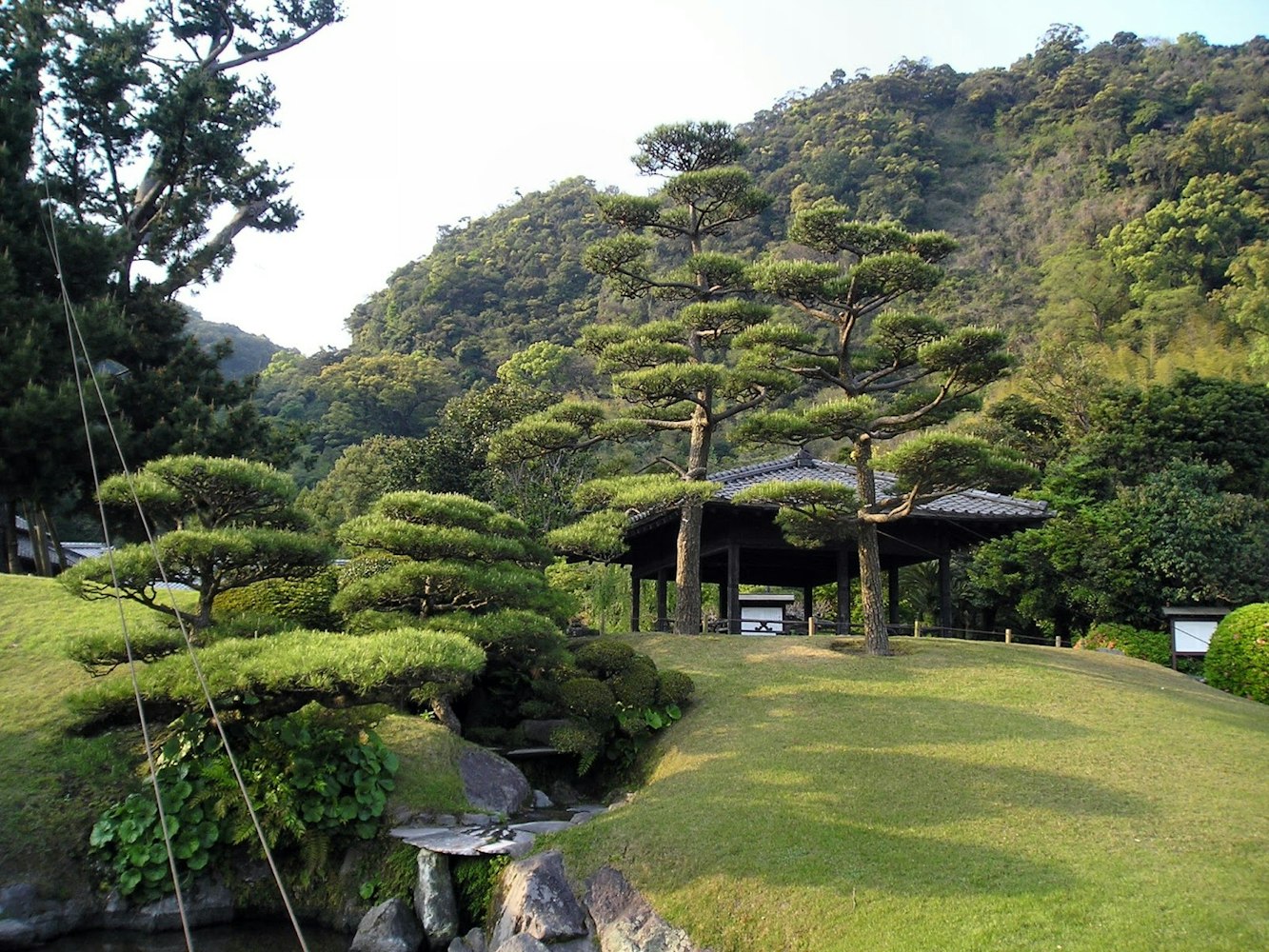
As you wander through the garden, you'll encounter beautiful elements of a classic Japanese garden, including tranquil ponds, elegant stone lanterns, charming tea houses, and an array of local plants. The Iso Residence, the former dwelling of the Shimadzu family, offers an insightful glimpse into Kagoshima's samurai heritage, further enriching your visit to Senganen.
In the journey through the lesser-known locales of Japan, we uncover a narrative that intricately weaves the threads of traditional heritage, natural splendor, cultural vibrancy, and gastronomical delights. Each city, from the harbor views of Hakodate to the artistry of Naoshima, from the samurai residences of Kanazawa to the intriguing Edo atmosphere of Takayama, and from the water city of Matsue to the volcanic backdrop of Kagoshima, offers a window into an aspect of Japan that's different from the mainstream image yet quintessentially Japanese.
Encapsulating these experiences invites a broader understanding of this fascinating country, beyond the lights of Tokyo and the historical allure of Kyoto. So, let your next journey in Japan be a path less trodden, an adventure through the heartlands, where the spirit of Nippon resides in its purest form. Ignite your wanderlust, for there is a Japan that waits beyond the familiar, eager to narrate tales untold, ready to offer unforgettable experiences. The journey of discovering Japan is endless, as every visit reveals a new facet and every path leads to a unique story.
